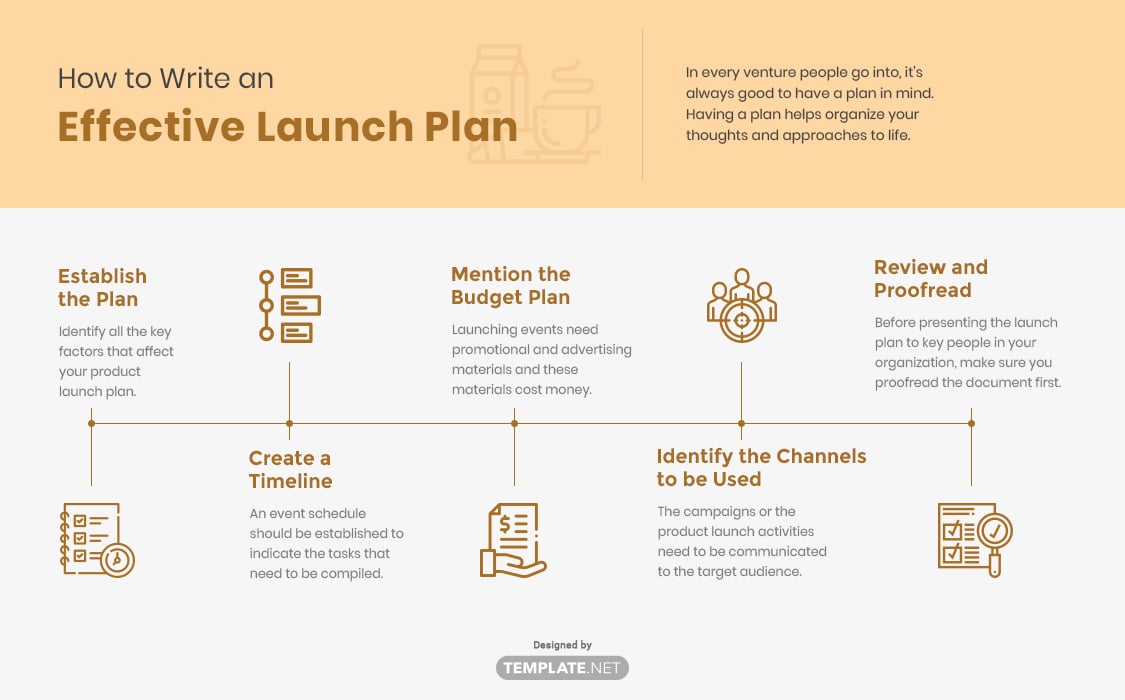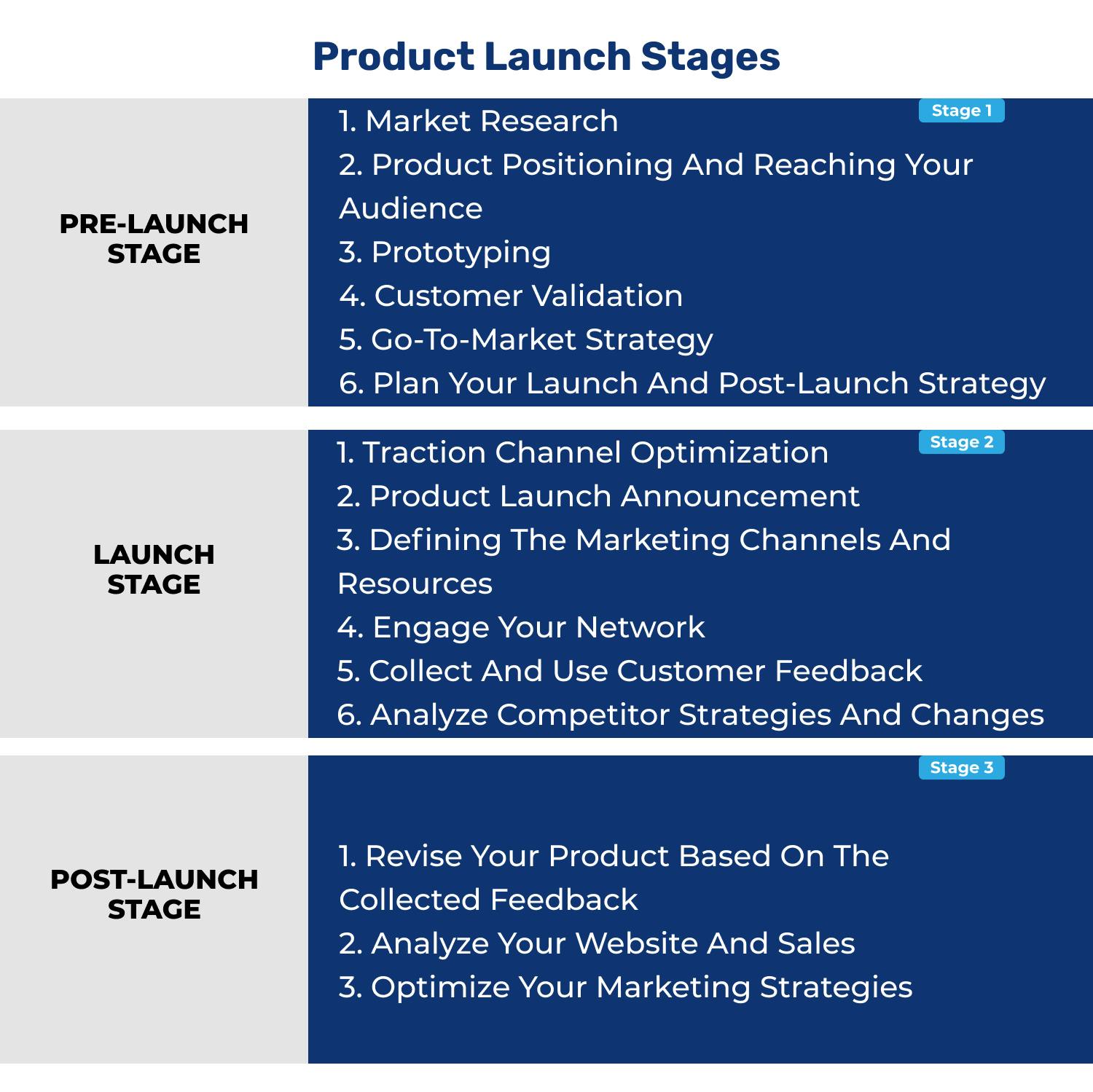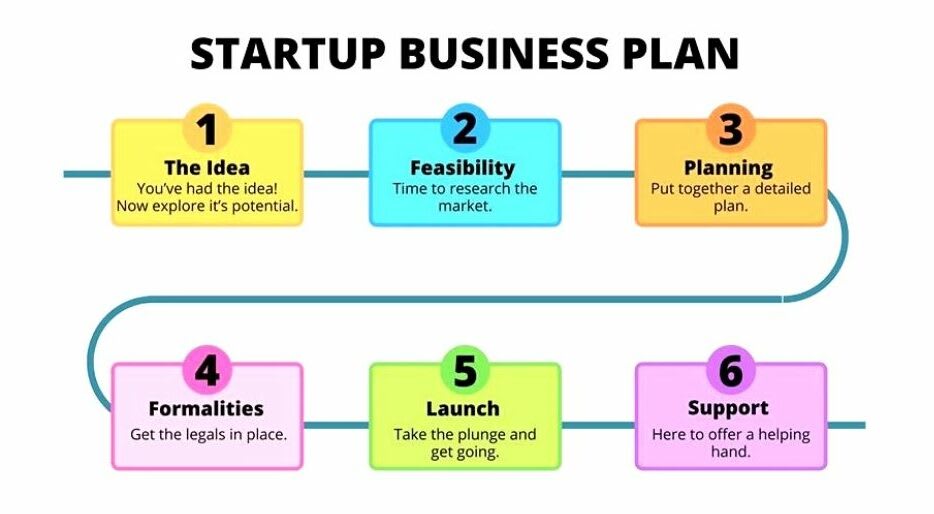Why a Solid Launch Strategy is Crucial for Startup Success
A well-planned launch strategy is essential for startups to generate buzz, build momentum, and establish a strong market presence. A successful launch can make all the difference in a startup’s journey, setting the tone for future growth and success. In today’s competitive business landscape, a solid launch strategy is crucial for startups to stand out from the crowd and capture the attention of their target audience.
According to a study by CB Insights, the top reasons why startups fail include lack of market need, running out of cash, and not having the right team in place. A well-planned launch strategy can help mitigate these risks by ensuring that the startup has a clear understanding of its target market, a solid business plan, and a talented team to execute the plan.
A solid launch strategy involves careful planning, execution, and measurement. It requires startups to define their unique value proposition, identify their target audience, and develop a marketing plan that resonates with that audience. By doing so, startups can create a buzz around their product or service, build momentum, and establish a strong market presence.
One of the key benefits of a solid launch strategy is that it helps startups to generate buzz and excitement around their product or service. This can be achieved through a variety of tactics, including social media marketing, content marketing, and influencer partnerships. By creating a buzz around their product or service, startups can attract the attention of potential customers, investors, and partners.
In addition to generating buzz, a solid launch strategy also helps startups to build momentum. This can be achieved by creating a sense of urgency around the launch, offering limited-time promotions or discounts, and encouraging customers to share their experiences with others. By building momentum, startups can create a snowball effect that drives growth and success.
Finally, a solid launch strategy helps startups to establish a strong market presence. This can be achieved by developing a professional website, creating engaging content, and leveraging paid advertising. By establishing a strong market presence, startups can attract the attention of potential customers, investors, and partners, and set themselves up for long-term success.
In conclusion, a well-planned launch strategy is crucial for startups to succeed in today’s competitive business landscape. By defining their unique value proposition, identifying their target audience, and developing a marketing plan that resonates with that audience, startups can create a buzz around their product or service, build momentum, and establish a strong market presence. By incorporating the right startup launch strategies, startups can set themselves up for long-term success and growth.
How to Create a Pre-Launch Hype that Drives Results
Creating a pre-launch hype is a crucial step in any startup launch strategy. It helps to build anticipation and excitement among potential customers, investors, and partners, and can ultimately drive results on launch day. So, how can startups create a pre-launch hype that drives results?
One effective way to create a pre-launch hype is through social media marketing. Startups can use social media platforms to share updates, behind-the-scenes insights, and sneak peeks of their product or service. This helps to build a community of interested followers who are eager to learn more about the startup and its offerings.
Influencer partnerships are another effective way to create a pre-launch hype. Startups can partner with influencers in their industry to promote their product or service to a wider audience. This can help to build credibility and generate buzz around the startup’s launch.
Content marketing is also a key component of a pre-launch hype strategy. Startups can create high-quality, engaging content that showcases their expertise and provides value to potential customers. This can include blog posts, videos, podcasts, and more.
Another effective way to create a pre-launch hype is through email marketing. Startups can build an email list of interested followers and send them regular updates, promotions, and exclusive offers. This helps to build a sense of anticipation and excitement around the launch.
Startups can also use paid advertising to create a pre-launch hype. Platforms like Facebook, Twitter, and LinkedIn offer a range of advertising options that can help startups reach a wider audience and build buzz around their launch.
Finally, startups can use events and webinars to create a pre-launch hype. Hosting events and webinars can help to build a sense of community and generate excitement around the launch. Startups can also use these events to showcase their product or service and provide value to potential customers.
By incorporating these strategies into their startup launch strategy, startups can create a pre-launch hype that drives results. Remember, the key is to build anticipation and excitement among potential customers, investors, and partners, and to provide value and usefulness to them in the process.
Some successful startups that have created a pre-launch hype include Warby Parker, Dollar Shave Club, and Airbnb. These startups used a combination of social media marketing, influencer partnerships, content marketing, and paid advertising to build buzz around their launch and drive results.
By studying these examples and incorporating the strategies outlined above, startups can create a pre-launch hype that drives results and sets them up for long-term success.
Defining Your Unique Value Proposition: A Key to Differentiation
A unique value proposition (UVP) is a statement that clearly communicates the value that a startup offers to its customers. It is a key differentiator that sets a startup apart from its competitors and resonates with its target audience. A well-crafted UVP is essential for a successful startup launch, as it helps to attract and retain customers, and ultimately drive revenue.
A UVP should be clear, concise, and compelling. It should clearly communicate the benefits that a startup offers to its customers, and explain how it solves a specific problem or meets a particular need. A UVP should also be unique and differentiated from the competition, and should resonate with the target audience.
There are several key elements that a UVP should include. First, it should clearly communicate the benefits that a startup offers to its customers. This could include features such as convenience, cost savings, or improved performance. Second, it should explain how the startup solves a specific problem or meets a particular need. This could include a description of the problem or need, and how the startup’s solution addresses it. Finally, it should be unique and differentiated from the competition, and should resonate with the target audience.
Developing a UVP requires a deep understanding of the target audience and the competitive landscape. Startups should conduct market research to understand the needs and preferences of their target audience, and should analyze the competition to identify areas of differentiation. They should also test and refine their UVP to ensure that it resonates with their target audience and effectively communicates the value that they offer.
Some examples of successful UVPs include Warby Parker’s “Try before you buy” approach, which allows customers to try up to five pairs of glasses at home for free, and Dollar Shave Club’s “Affordable razors, delivered to your door” approach, which offers customers a convenient and cost-effective way to purchase razors. These UVPs are clear, concise, and compelling, and effectively communicate the value that these startups offer to their customers.
Incorporating a UVP into a startup launch strategy can have a significant impact on the success of the launch. It can help to attract and retain customers, and ultimately drive revenue. By clearly communicating the value that a startup offers to its customers, a UVP can help to differentiate the startup from its competitors and establish a strong market presence.
By developing a clear and compelling UVP, startups can establish a strong foundation for their launch strategy and set themselves up for long-term success. Remember, a UVP is a key differentiator that sets a startup apart from its competitors and resonates with its target audience. By incorporating a UVP into their launch strategy, startups can effectively communicate the value that they offer to their customers and drive revenue.
Building a Strong Online Presence: Website and Social Media Essentials
A professional website and social media presence are essential components of a successful startup launch strategy. A well-designed website and social media presence can help to establish a startup’s brand identity, build trust with potential customers, and drive traffic and sales.
A professional website should be visually appealing, easy to navigate, and optimized for search engines. It should clearly communicate the startup’s unique value proposition, showcase its products or services, and provide a clear call-to-action. A website should also be mobile-friendly, as more and more people are accessing the internet through their smartphones.
Social media is also a crucial component of a startup’s online presence. Social media platforms such as Facebook, Twitter, and LinkedIn provide a way for startups to connect with their target audience, build brand awareness, and drive traffic to their website. Startups should create a social media strategy that aligns with their overall marketing goals, and use social media analytics to track their performance and make data-driven decisions.
Content creation is also an important aspect of building a strong online presence. Startups should create high-quality, engaging content that resonates with their target audience. This can include blog posts, videos, infographics, and more. Content should be optimized for search engines, and should be shared across social media platforms to maximize reach and engagement.
Search engine optimization (SEO) is also critical for a startup’s online presence. SEO involves optimizing a website and its content to rank higher in search engine results pages (SERPs). This can be achieved through keyword research, on-page optimization, and link building. By optimizing their website and content for search engines, startups can increase their visibility, drive more traffic to their website, and attract more customers.
Some best practices for building a strong online presence include creating a consistent brand identity across all online platforms, using high-quality visuals and graphics, and providing a clear and concise message. Startups should also use social media analytics to track their performance, and make data-driven decisions to optimize their online presence.
By building a strong online presence, startups can establish a solid foundation for their launch strategy and set themselves up for long-term success. A professional website and social media presence can help to drive traffic, build trust, and attract customers. By incorporating these essential components into their launch strategy, startups can increase their chances of success and achieve their goals.
Examples of startups that have successfully built a strong online presence include Airbnb, Uber, and Warby Parker. These startups have created a consistent brand identity across all online platforms, used high-quality visuals and graphics, and provided a clear and concise message. By building a strong online presence, these startups have been able to drive traffic, build trust, and attract customers, ultimately achieving success and growth.
Leveraging Paid Advertising for a Successful Launch
Paid advertising is a crucial component of a successful startup launch strategy. It can help to drive traffic, generate leads, and increase sales. With the right approach, paid advertising can be a powerful tool for startups to reach their target audience and achieve their goals.
Google Ads is a popular paid advertising platform that can help startups to reach their target audience. With Google Ads, startups can create targeted ads that appear on Google search results pages and other websites across the internet. By using keywords and demographics, startups can target their ads to specific audiences and increase their chances of conversion.
Facebook Ads is another popular paid advertising platform that can help startups to reach their target audience. With Facebook Ads, startups can create targeted ads that appear on Facebook and Instagram. By using demographics, interests, and behaviors, startups can target their ads to specific audiences and increase their chances of conversion.
LinkedIn Ads is a paid advertising platform that can help startups to reach their target audience on LinkedIn. With LinkedIn Ads, startups can create targeted ads that appear on LinkedIn and other websites across the internet. By using job titles, industries, and company sizes, startups can target their ads to specific audiences and increase their chances of conversion.
To create effective ad campaigns, startups should focus on creating high-quality ad copy and visuals. They should also use targeting options to reach their target audience and optimize their ads for conversion. By using A/B testing and analytics, startups can optimize their ad campaigns and increase their return on investment.
Some best practices for leveraging paid advertising for a successful launch include setting clear goals and objectives, targeting the right audience, and optimizing ad campaigns for conversion. Startups should also use A/B testing and analytics to optimize their ad campaigns and increase their return on investment.
Examples of startups that have successfully leveraged paid advertising for a successful launch include Uber, Airbnb, and Warby Parker. These startups have used paid advertising to drive traffic, generate leads, and increase sales. By using targeted ads and optimizing their ad campaigns for conversion, these startups have been able to achieve their goals and drive growth.
By incorporating paid advertising into their launch strategy, startups can increase their chances of success and drive growth. With the right approach, paid advertising can be a powerful tool for startups to reach their target audience and achieve their goals.
Measuring Launch Success: Key Metrics to Track
Measuring the success of a startup launch is crucial to understanding the effectiveness of the launch strategy and identifying areas for improvement. By tracking key metrics, startups can evaluate the success of their launch and make data-driven decisions to optimize their strategy.
One of the most important metrics to track is website traffic. This includes the number of visitors to the website, the pages they visit, and the time they spend on the site. By tracking website traffic, startups can understand how well their marketing efforts are driving visitors to their site.
Engagement is another key metric to track. This includes metrics such as social media engagement, email open rates, and conversion rates. By tracking engagement, startups can understand how well their content is resonating with their target audience and identify areas for improvement.
Conversion rates are also a critical metric to track. This includes metrics such as the number of leads generated, the number of sales made, and the revenue generated. By tracking conversion rates, startups can understand how well their marketing efforts are driving revenue and identify areas for improvement.
Customer acquisition costs (CAC) are also an important metric to track. This includes the cost of acquiring a new customer, including marketing and sales expenses. By tracking CAC, startups can understand how well their marketing efforts are driving revenue and identify areas for improvement.
Return on investment (ROI) is also a key metric to track. This includes the return on investment for each marketing channel, including social media, email marketing, and paid advertising. By tracking ROI, startups can understand how well their marketing efforts are driving revenue and identify areas for improvement.
By tracking these key metrics, startups can evaluate the success of their launch and make data-driven decisions to optimize their strategy. This includes identifying areas for improvement, adjusting marketing efforts, and allocating resources more effectively.
Some best practices for measuring launch success include setting clear goals and objectives, tracking key metrics, and using data to inform decision-making. Startups should also use analytics tools to track their metrics and identify areas for improvement.
Examples of startups that have successfully measured launch success include Uber, Airbnb, and Warby Parker. These startups have used data to inform their decision-making and optimize their marketing efforts, resulting in significant revenue growth and success.
By incorporating metrics tracking into their launch strategy, startups can ensure that they are making data-driven decisions and optimizing their marketing efforts for maximum ROI.
Post-Launch Evaluation and Iteration: A Critical Step to Long-Term Success
After a startup launch, it’s essential to evaluate the results, gather feedback, and iterate on the strategy to ensure long-term success and continuous improvement. This critical step helps startups to refine their approach, address any issues, and make data-driven decisions to drive growth.
Evaluating the launch results involves analyzing key metrics such as website traffic, engagement, conversion rates, and customer acquisition costs. This helps startups to understand what worked well and what didn’t, and identify areas for improvement.
Gathering feedback is also crucial in the post-launch evaluation process. Startups should collect feedback from customers, investors, and partners to understand their perceptions and opinions about the launch. This feedback can provide valuable insights into what worked well and what didn’t, and help startups to refine their approach.
Iterating on the strategy involves making adjustments to the launch plan based on the evaluation results and feedback. This may involve refining the marketing approach, adjusting the product or service offering, or making changes to the business model.
Some best practices for post-launch evaluation and iteration include setting clear goals and objectives, tracking key metrics, and gathering feedback from multiple sources. Startups should also use data to inform their decision-making and iterate on their strategy regularly.
Examples of startups that have successfully evaluated and iterated on their launch strategy include Uber, Airbnb, and Warby Parker. These startups have used data to inform their decision-making and refine their approach, resulting in significant revenue growth and success.
By incorporating post-launch evaluation and iteration into their launch strategy, startups can ensure that they are continuously improving and refining their approach to drive long-term success.
Post-launch evaluation and iteration is an ongoing process that requires continuous monitoring and refinement. Startups should regularly review their metrics, gather feedback, and make adjustments to their strategy to ensure that they are on track to achieve their goals.
By following these best practices and incorporating post-launch evaluation and iteration into their launch strategy, startups can set themselves up for long-term success and drive growth.
Real-World Examples of Successful Startup Launches
There are many examples of successful startup launches that can provide valuable insights and lessons for entrepreneurs. Here are a few case studies of successful startup launches:
Uber is a great example of a successful startup launch. Uber’s launch strategy involved creating a strong online presence, leveraging social media and influencer marketing, and offering a unique value proposition that set it apart from competitors. Uber’s launch was highly successful, and the company quickly gained traction and became a household name.
Airbnb is another example of a successful startup launch. Airbnb’s launch strategy involved creating a strong online presence, leveraging social media and content marketing, and offering a unique value proposition that set it apart from competitors. Airbnb’s launch was highly successful, and the company quickly gained traction and became a leading player in the vacation rental market.
Warby Parker is a great example of a successful startup launch in the e-commerce space. Warby Parker’s launch strategy involved creating a strong online presence, leveraging social media and influencer marketing, and offering a unique value proposition that set it apart from competitors. Warby Parker’s launch was highly successful, and the company quickly gained traction and became a leading player in the eyewear market.
These case studies demonstrate the importance of having a well-planned launch strategy, leveraging social media and influencer marketing, and offering a unique value proposition that sets a startup apart from competitors. By studying these examples, entrepreneurs can gain valuable insights and lessons that can help them launch their own startups successfully.
Other successful startup launches include Dropbox, Instagram, and Snapchat. These companies all had well-planned launch strategies that involved creating a strong online presence, leveraging social media and influencer marketing, and offering a unique value proposition that set them apart from competitors.
By studying these examples, entrepreneurs can gain a better understanding of what it takes to launch a successful startup. They can learn about the importance of having a well-planned launch strategy, leveraging social media and influencer marketing, and offering a unique value proposition that sets them apart from competitors.
These case studies also highlight the importance of continuous improvement and iteration. Many of these startups have continued to evolve and improve their products and services over time, which has helped them to stay ahead of the competition and maintain their market position.






